Thomas Telford


Thomas Telford
(1757-1834)
Commemorated on 23 plaques
Galton Bridge Built in 1829 by Thomas Telford. When completed, Galton Bridge was the longest single-span bridge over the largest earthworks in the world. The bridge was named after Samuel Galton, major shareholder.
Galton Bridge, Roebuck Lane, Smethwick, United Kingdom where they built a bridge (1828)
Thomas Telford Civil Engineer 1757-1834 worked in Portsmouth Naval Dockyard from 1784 until 1786. This plaque was placed here to commerate the 250th anniversary of the birth of Thomas Telford
Storehouse no. 9, Main Road, Portsmouth, United Kingdom where they worked (1783-1785)
7 Old Turn Junction (1769) This junction was formed when James Brindley's contour canal of 1769 was joined by Thomas Telford's New Main Line in 1827.
Old Turn Junction (near the NIA), Birmingham, United Kingdom where they was (1826)
Montford Bridge to commemorate the 250th anniversary of his birth Thomas Telford (1757 - 1834) First President. The first bridge designed and built by Thomas Telford and opened on Lady Day 1792, following his appointment as County Surveyor of Public Works, Shropshire, 1787
North end of Montford Bridge, Shrewsbury, United Kingdom where they was
St Michael's Church, Church Street, Madeley. 1796. Designed by Thomas Telford. Fine cast iron tombs in graveyard including Revd. John Fletcher.
St Michael's church, Church Street, Madeley, United Kingdom where they designed
Corbet Arms This hotel, originally a 17th Century coaching inn was known as "The Talbot" until 1825. Thomas Telford stayed here in 1832 during the building of teh nearby canal. An important town meeting place, in 1862 it was the scene of the inauguration of the Nantwich and Market Drayton Railway.
Corbet Arms Hotel, Market Drayton, United Kingdom where they stayed
Thomas Telford 1757-1834 whose skills ensured the completion of the Diggle Flight and Standedge Tunnel
Entrance to Standedge Tunnel, Diggle, United Kingdom where they worked
Nodwedd Peirianneg Sifil o Bwysigrwydd Hanesyddol Rhyngwladol Pont Grog Conwy. Codwyd 1822-1826, Rhychwant 327tr. Ailosodwyd a Chryfhawyd y Dec Gydag ategion ochr 1896, Caewyd I Gerbydau 1958. Peirianwyr: T Telford (1822-34) a W A Provis (1822-50). Gwaith Haearn: W Hazledine, T Rhodes, Gwaith Carreg: J Wilson. Dyma'r Adeiilawaith Pwysicaf ar y Ffordd Bwysig Rhwmg Bangor a Chaer. Adeiladwyd Pont Grog Conwy, Sef Creadigaeth Fwyaf trawiadol Telford yn y dull Gothig, gyda'r un dechnoleg a ddatblygwyd ar gyfer y bont fwy dros y fenai (1818-26), ac mae ganddi ei chadwyni haearn gwreiddiol. International Historic Civil Engineering Landmark Conwy Suspension Bridge. Erected 1822-1826, span 327ft. Since replaced and strengthened with side trusses 1896, Closed to Vehicular Traffic 1958. Engineers: T Telford (1822-34) and W A Provis ( 1822-50) . Ironwork: W Hazledine, T Rhodes, Masonry: J Wilson. This was the major structure on the strategically important Bandor to Chester Road. Conwy Suspension Bridge, Telford’s most dramatic creation in the Gothic style was built with the identical technology developed for the larger Menai bridge (1818-26) and still has its original iron chains.
English translation: International Historic Civil Engineering Landmark Conwy Suspension Bridge. Erected 1822-1826, span 327ft. Since replaced and strengthened with side trusses 1896, Closed to Vehicular Traffic 1958. Engineers: T Telford (1822-34) and W A Provis ( 1822-50) . Ironwork: W Hazledine, T Rhodes, Masonry: J Wilson. This was the major structure on the strategically important Bandor to Chester Road. Conwy Suspension Bridge, Telford’s most dramatic creation in the Gothic style was built with the identical technology developed for the larger Menai bridge (1818-26) and still has its original iron chains.
Conwy Suspension Bridge close to the Toll House, Conwy, United Kingdom where they designed (1822-1826)
Nodwedd Peirianneg Sifil o Bwysigrwydd Hanesyddol Rhyngwladol Pont Menai Codwyd 1818-26, uchder 153TR, Hyd 1388TR. Prif rychwant 850TR. Cryfhawyd y dec 1840 & 1893. Rhoddwyd dur yn lle'r Gwaith Haearn ac Addaswyd y dec a'i ledu ar Gyfer Trafnidiaeth fodern 1939-41. Peirianwyr T. Telford 1818-34, W.A. Provis 1818-50, Syr B. Baker 1893, Syr A. Gibb & Prtn'aid 1939-41. Gwaith Carreg: J. Wilson. Dyma'r adeiladwaith pwysicaf ar y Ffordd Bwysig Sydd yn Cysylltu Llundain a Chaergybi a Thros y mor i'r iwerddon, Bryd Hynny, Hon Oedd y Bont a'r Rhychwant Hwyaf, ac yr, oedd yn Arloesol yn dechnolegol, gan ymestyn ffiniau technoleg pontydd crog ledled y Byd. Mae gan Bont Conwy (1826) a Godwyd a'r un dechnoleg arloesol, ond sydd yn llai, ei Gwaith Haern Gwreiddiol. Cyflwynwyd Gan Sefydliad Y Peirianwyr Sifil a Chymdeithas Americanaidd Y Peirianwyr Sifil 26 Mehefin 2003 International Historic Civil Engineering Landmark Menai suspension bridge. Erected 1818-26. Height 153ft. Length 1388ft. Main span 580ft. Deck strengthened 1840 & 1893. Ironwork replaced by steel-work & deck modified & widened for modern traffic 1939-41. Engineers: T. Telford 1818-34, W.A. Provis 1818-50, Sir B. Baker 1893, Sir A. Gibb & Ptnrs 1939-41. Masonry: J. Wilson. This was the major structure on the strategic road connecting London with Holyhead and by sea to Ireland. The bridge with its then world’s longest span greatly advanced suspension bridge development. The smaller Conwy suspension bridge (1826) built with identical pioneering technology still has its original ironwork. Presented by the Institution of Civil Engineers and the American Society of Civil Engineers 26 June 2003
English translation:
Former Toll House on the Bangor side of the bridge, Menai Bridge, United Kingdom where they engineered (1818-1826)
Craigellachie Bridge designed and built by Thomas Telford 1814 restored to its original design by the county councils of Banff, Moray & Nairn 1964
Craigellachie Bridge, Craigellachie, United Kingdom where they built (1814)
This bridge was deigned by Thomas Telford 1767-1834 and constructed under his supervision during 1819
, Bannockburn, United Kingdom where they designed
Pontcysyllte Aqueduct and Canal World Heritage Site Pontcysyllte Aqueduct and Canal was designated a site of Outstanding Universal Value and placed on the World Heritage List on 27th June, 2009. The 11 mile/18 kilometre World Heritage Site starts at Gledrid Bridge near Chirk and extends to the Horseshoe Falls above Llangollen, where water is taken from the River Dee to feed the canal system. It is the first World Heritage Site in the United Kingdom to straddle two Countries, Wales and England. The site was built between 1795 and 1808 and represents the work of two outstanding figures, Thomas Telford and William Jessop. Pontcysyllte Aqueduct is the highest navigable aqueduct ever built and is recognised internationally as a masterpiece of civil engineering.
Trevor Basin, Llangollen Canal, Pontcysyllte, United Kingdom where they was
Paisley Canal Line This plaque marks the 250th anniversary of the birth of Thomas Telford, the great civil engineer, who designed the Glasgow, Paisley & Ardrossan Canal opened to here in 1811 and converted to a railway in 1883. Blackhall Bridge (1809) over the white cart, with the longest aqueduct span of the canal age and now carrying the railway, is 3/4 mile east of this station.
Causeyside Street, Paisley, United Kingdom where they was
To commemorate the bicentenary of opening Dunkeld bridge designed by Thomas Telford (1757-1834) first President, Institution of Civil Engineers built by John 4th Duke of Atholl (1755-1830) as a major element in the improvement of highland roads by replacing two ferries & paid for by tolls taken over by the roads authority in 1879
Dunkeld Bridge, Dunkeld, United Kingdom where they designed
Thomas Telford 1757-1834 Engineer and Architect Lived here 1792
East Castle Street, Bridgnorth, United Kingdom where they lived (1792)
Pont Y Borth Menai Suspension Bridge Adeiladwyd 1818-1826 I Gwblhau'r Ffordd Rhwng Llandain a Chaergybi Constructed 1818-1826 to complete the London to Holyhead Road Thomas Telford 1757 - 1834 Peiriannydd Engineer Cyflwynwyd ar 9 Awst 2007 Gan Sefydliad Y Peirianwyr Sifil-Cymru I Ddathlu 250 o Flynyddoedd ers ei eni Presented on 9 August 2007 By the Insistution of Civil Engineers-Wales to celebrate the 250th Anniversary of his birth
English translation: Menai Suspension Bridge Constructed 1818-1826 to complete the London to Holyhead Road Thomas Telford 1757 - 1834 Engineer Presented on 9 August 2007 By the Insistution of Civil Engineers-Wales to celebrate the 250th Anniversary of his birth
Menai Bridge, Menai Bridge, United Kingdom where they commemorated on the centenary of his birth
Pont Grog Conwy Conwy Suspension Bridge Adeiladwyd 1822-826 fel rhan o'r Gwelliannau i'r ffordd rhwng Caer a Bangor Constructed 1822-1826 as part of the improvement of the Chester to Bangor Road Thomas Telford 1757 - 1834 Peiriannydd Engineer Cyflwynwyd ar 9 Awst 2007 gan sefydliad y peirianwyrsifil - Cymru I ddathlu 250 o flynyddoedd ers ei eni Presented on 9 August 2007 by the Institution of Civil Engineers - Wales to celebrate the 250th anniversary of his birth
English translation: Conwy Suspension Bridge Constructed 1822-1826 as part of the improvement of the Chester to Bangor Road Thomas Telford 1757 - 1834 Engineer Presented on 9 August 2007 by the institution of Civil Engineers - Wales to celebrate the 250th anniversary of his birth
Conwy Suspension Bridge close to the Toll House, Conwy, United Kingdom where they commemorated on the 250th anniversary of his birth (2007)
Conwy Suspension Bridge Built by Thomas Telford in 1826 Restored by the National Trust in 1969 with the help of Conway Borough Council And Public Subscription
Conwy Suspension Bridge close to the Toll House, Conwy, United Kingdom where they built a bridge (1822-1826)
Pontcysyllte Aqueduct Un on gampweithiau Thomas Telford, adeiladwyd 1795 - 1805. Gwnaed y 18 pilar o'r garreg leol, ac uchder y rhai yn y canol hyd at y gwaith metal yw 126! Rhed y gamlas drwy gagn haearn sydd 1007' o hyd, 11' 10" o led, a 5'3"o ddyfnder-y mwyaf ym mhrydain. Daeth yr hearn o weithfeydd William Hazeldine yn amwythig a'r cefn mawr. Cyfanswm £47,000 ffrydi'r dwr i'r gamla o'r ddyfrdwy ger rhaeadr-y-bedol, llantysilio. Pontcysyllte Aqueduct Built By Thomas Telford 1795 - 1805 There are 18 Piers made of local stone, the central ones over the Dee being 126’ high up to the ironwork. The canal runs through an iron trough, 1007’ Long, 11’ 10” wide and 5’ 3” deep, The largest in Britain. The Iron was supplied by William Hazeldine from his foundries at Shrewsbury and nearby Cefn Mawr. Total cost £47000 Water is fed from the Dee at the Horseshoe Falls at Llanttysilio near Llangollen
English translation: Pontcysyllte Aqueduct One of Thomas Telford's masterpieces, built 1795 - 1805. The 18 pillars were made from the local stone, and the height of those in the middle length to the metalwork is 126! Run the canal through an iron gag is 1007' long, 11' 10" wide, and 5'3" in depth—the largest in Britain. The hearn came from William's works Hazeldine in shale and reverse great. Total £47,000 the flow of water into the canal from the dune near rhaeadr-y-bedol, llantysilio. Pontcysyllte Aqueduct Built By Thomas Telford 1795 - 1805 There are 18 Piers made of local stone, the central ones over the Dee being 126' high up to the ironwork. The canal runs through an iron trough, 1007' Long, 11' 10” wide and 5' 3” deep, the largest in Britain. The Iron was supplied by William Hazeldine from his foundries at Shrewsbury and nearby Cefn Mawr. Total cost £47000 Water is fed from the Dee at the Horseshoe Falls at Llanttysilio near Llangollen [AWS Translate]
Pontcysyllte Aqueduct - Station Road, Trevor, Pontcysyllte, United Kingdom where they was
Dyfrbont Pontcysyllte Pontcysyllte Aqueduct Adeiladwyd 1795-1805 fel Rhan o Gamlas Ellesmere Constructed 1795-1805 as Part of the Ellesmere Canal Thomas Telford 1757-1834 Peiriannydd Engineer Cyflwynwyd Aar 9 Awst 2007 gan Sefydliad y Peirianwyr Sifil Cymru 1 Ddathlu 250 Flynyddoedd Ers Ei Eni Presented on 9 August 2007 by The Institution Of Civil Engineers-Wales to celebrate the 250th Anniversary of his birth Ice Institution Of Civil Engineers
English translation: Pontcysyllte Aqueduct Pontcysyllte Aqueduct Built 1795-1805 as Part of Ellesmere Canal Constructed 1795-1805 as Part of the Ellesmere Canal Thomas Telford 1757-1834 Engineer Engineer Aar was presented on 9 August 2007 by the Institute of Civil Engineers Wales 1 Celebrating 250 Years Since Its Birth Presented on 9 August 2007 by The Institution Of Civil Engineers-Wales to celebrate the 250th Anniversary of his birth Ice Institution Of Civil Engineers [AWS Translate]
Southern end of the Pontcysyllte Aqueduct, Llangollen Canal, Pontcysyllte, United Kingdom where they was
Dyfrbont Pontcysylle Aqueduct Thomas Telford (1757-1834) Ganwyd yn yr Alban ac wedi gweithio fel saer maen, cafodd Telford ei benodi fel Syrfewr Gweithiau Cyhoeddus Sir Amwythig yn 1787. Cafodd swydd Asiant Cyffredinol ar gyfer Camlas Ellesmere yn 1793 ac yr oedd yn gyfrifol am holl waith y gamlas. Yr oedd y ddwy Ddyfrbont, Y Waun (1801) a Phontcysyllte (1805), yn arloesol yn eu hadeiladwaith. Ym Mhontcysyllte adeilad- wyd un cafn haearn bwrw hir o naill ben y bont i'r llall i eistedd ar bileri cerrig 126 troedfedd (38.2m) uwchben Afon Dyfrdwy, a'r cafn yn cario'r dŵr a'r Ilwybr hallo. Yr oedd Telford yn gyfrifol am gannoedd o weithiau eraill ledled Prydain Fawr, yn cynnwys y ffordd newydd rhwng Amwythig a Chaergybi a honno'n mynd trwy bentref Froncysyllte ger pen arall y ddyfrbont. Gwahoddwyd ef i fod yn Llywydd cyntaf Sefydliad y Peirianwyr Sifil yn 1820 a daliodd yr anrhydedd honno hyd ei farwolaeth. Thomas Telford (1757-1834) Born in Scotland and having worked as a stonemason, Thomas Telford was appointed Surveyor of Public Works for Shropshire 1787. He was appointed General Agent for the Ellesmere Canal in 1793 and was responsible for all the work on the canal. The two aqueducts - Chirk (1801) and Pontcysyllte (1805) - were innovative in their construction. At Pontcysyllte a continuous cast iron trough was fabricated on top of stone pillars to carry the canal and towpath 126 feet (38.2m) above the River Dee. Telford was responsible for hundreds of other works throughout Great Britain, including the new road from Shrewsbury to Holyhead which passes through the village of Froncysyllte near the other end of the aqueduct. He was invited to become the first President of the Institution of Civil Engineers in 1820, an honour he held until his death. William Hazledine (1763-1840) Yr oedd Telford yn ei alw "Yr archgonsunwr ei hun, Myrddin Hazledine"! Ganwyd William Hazledine yn Sir Amwythig a datblygodd ei fusnes gwaith haearn yn yr Amwythig. Yn 1796 gwnaeth yr holl drawstiau a cholofnau ar gyfer Melin Bage- ffatri gyntaf y byd gyda fframwaith haearn. Sefydlodd ffowndri ym Mhlas Kynaston, llai na milltir o'r safle hwn, yn 1800 ac enillodd gytundeb y gwaith haearn ar gyfer y ddyfrbont ya Y oedd yn gyfrifol am wneud yr haeam i gyd e gludo i'r safle, ac yna am adeiladu's cafn 1007 troedfedd (305m) o hyd i gario'r gamlas dros Ddyffryn Dyfrdwy. Yr oedd Haziedine yn gyfrifol am gyflenwi haearn ar gyfer nifer o bontydd Telford ledled y wiad Yng Nghymru yr oedd hyn yn cynnwys pontydd crog y Fenai a Chonwy, a Phont "Waterloo" ym Metws y Coen William Hazledine (1763-1840) Telford called him "The Arch-conjurer himself, Merlin Hazledine"! William Hazledine was born in Shropshire and developed his iron- works business in Shrewsbury. In 1726 he supplied the iron beams and columns for Bage's Mill - the world's first iron framed factory. He established a foundry at Plas Kynaston, less than a mile from this site, in 1800 and won the ironwork contract for this aqueduct He was responsible for making all the iron, transporting it to site and building the 1007 ft (305m) long trough to carry the canal over the Dee Valley. Hazledine was responsible for supplying the ironwork for a number of Telford's bridges throughout the country. In Wales, these included the suspension bridges at Menai and Conwy and the "Waterloo Bridge at Betws y Coed. William Jessop (1745-1814) Ganwyd yn Nyfnaint, ac aeth William Jessop yn brentis at John Smeaton, "Tad Peirianeg Sifil. Yn 1772 dechreuodd weithio fel peiriannydd ymgynghol ar ei ben ei hun a daeth yn beirian nydd profiadol ac uchel ei barch ym maes camlesi, afonydd, draenio tir a gwaith tebyg. Yn 1791 cafodd ei benodi fel Peiriannydd Ymgynghorol ar gyfer camlas Ellesmere, a fwriadwyd i gysylltu afonydd Merswy, Dyfrdwy a Hafren. Jessop a benderfynodd lwybry gamlas a llywio'r ddeddf berthnasol drwy'r broses Semedoor Wea Telford gael ei benodi fel Asiant Cyffredinol ro Jessopped yeste cywiro a chymeradwyo cynlluniau ac argymhellion Telfowa redd ddau yn cydweithio ar brosiect sylweddol hefyd yn yr Alban a 1805 hyd at farwolaeth Jessop. Mae Camlas Caledonia, yn medeg o for Iwerddon ger Fort William hyd at För y Gogledd yn Invermess William Jessop (1745-1814) Born in Devon, William Jessop was apprenticed to John Smeaton, "the Father of Civil Engineering. In 1772 he started working as a Consulting engineer in his own right and became a most experienced and respected engineer in the field of canals, rivers, drainage and similar works. In 1791 he was appointed consulting engineer for the Ellesmere canal, which was intended to join the rivers Mersey, Dee and Severn with each other. Jessop decided the route of the canal and steered the relevant Act through the Parlia- mentary process. After Telford was appointed as General Agent Jessop's role was to consider, correct and approve Telford's plans and recommendations. The two also worked together on a significant project in Scotland from 1803 until Jessop's death. The Caledonian Canal runs from the Irish Sea near Fort William to the North Sea at Inverness.
English translation: Aqueduct Pontcysylle Aqueduct Thomas Telford (1757-1834) Born in Scotland and working as a mason, Telford was appointed Surveyor of Shropshire Public Works in 1787. He was given the post of General Agent for the Ellesmere Canal in 1793 and was responsible for all the work of the canal. The two Waterbridges, Y Waun (1801) and Pontcysyllte (1805), were innovative in their construction. At Pontcysyllte building- one long cast-iron trough was extended from one end of the bridge to the other to sit on stone pillars 126 feet (38.2m) above the River Dee, with the trough carrying the water and the Salting Way. Telford was responsible for hundreds of other works across Great Britain, including the new road between Shropshire and Holyhead which passed through the village of Froncysyllte near the other end of the waterway. He was invited to be the first President of the Institute of Civil Engineers in 1820 and held that honor until his death. Thomas Telford (1757-1834) Born in Scotland and having worked as a stonemason, Thomas Telford was appointed Surveyor of Public Works for Shropshire in 1787. He was appointed General Agent for the Ellesmere Canal in 1793 and was responsible for all the work on the canal. The two aqueducts - Chirk (1801) and Pontcysyllte (1805) - were innovative in their construction. A continuous cast iron trough was fabricated on top of stone pillars to carry the canal and towpath 126 feet (38.2m) above the River Dee. Telford was responsible for hundreds of other works throughout Great Britain, including the new road from Shrewsbury to Holyhead which passes through the village of Froncysyllte near the other end of the aqueduct. He was invited to become the first President of the Institution of Civil Engineers in 1820, an honor he held until his death. William Hazledine (1763-1840) Telford called him “The arch-consul himself, Myrddin Hazledine”! William Hazledine was born in Shropshire and developed his ironworking business in Shropshire. In 1796 he made all the beams and columns for the Bage Mill- the world's first factory with an iron frame. He established a foundry at Plas Kynaston, less than a mile from this site, in 1800 and won the ironworks contract for the aqueduct. He was responsible for making the entire haeam and transporting it to the site, and then for constructing a 1007-foot (305m) long trough to carry the canal over the Dyffryn Deafness. Haziedine was responsible for supplying iron for a number of Telford bridges across the countryside In Wales this included the Menai and Conwy suspension bridges, and the “Waterloo” Bridge at Metws y Coen William Hazledine (1763-1840) Telford called him “The Arch-Conjurer himself, Merlin Hazledine”! William Hazledine was born in Shropshire and developed his ironworks business in Shrewsbury. In 1726 he supplied the iron beams and columns for Bage's Mill - the world's first iron framed factory. Ha un foundry a Plas Kynaston, meno di un mile del sito, nel 1800 e ha vinto il contratto ironwerk per questa aqueduct. È stato responsabile per creare tutte le ferro, trasferire al sito e construire il trò 1007 ft (305m) lungo per il canale a Dee Valley. Hazledine was responsible for supplying the ironwork for a number of Telford's bridges throughout the country. In Wales, these included the suspension bridges at Menai and Conwy and the “Waterloo Bridge at Betws y Coed. William Jessop (1745-1814) Born in Devon, William Jessop apprenticed to John Smeaton, “Father of Civil Engineering. In 1772 he began to work as a consulting engineer on his own and became an experienced and respected mountain engineer in the field of canals, rivers, land drainage and similar works. In 1791 he was appointed as Consultative Engineer for the Ellesmere canal, which was intended to connect the rivers Merswy, Dee and Severn. Jessop who decided canal route and navigated the relevant act through the process Semedoor Wea Telford was appointed as General Agent ro Jessopped yeste corrected and approved Telfowa plans and recommendations redd both collaborated on a significant project also in Scotland and 1805 up to death of Jessop. The Caledonia Canal, runs from the east of Ireland near Fort William up to the North För at Invermess William Jessop (1745-1814) Born in Devon, William Jessop was apprenticed to John Smeaton, “the Father of Civil Engineering. In 1772 he began working as a Consulting engineer in his own right and became a most experienced and respected engineer in the field of canals, rivers, drainage and similar works. In 1791 he was appointed consulting engineer for the Ellesmere canal, which was intended to join the rivers Mersey, Dee and Severn with each other. Jessop decided the route of the canal and steered the relevant Act through the Parliamental process. After Telford was appointed as General Agent Jessop's role was to consider, correct and approve Telford's plans and recommendations. The two also worked together on a significant project in Scotland from 1803 until the death of Jessop. The Caledonian Canal runs from the Irish Sea near Fort William to the North Sea at Inverness. [AWS Translate]
Pontcysyllte Aqueduct & Trevor Basin Visitor Centre, Pontcysyllte, United Kingdom where they was
Thomas Telford 1757-1834. First President of the Institution of Civil Engineers. Born at Glendinning, Westerkirk, Langholm. A pioneering Civil Engineer whose lasting legacy of roads, bridges, canals and buildings constructed throughout his extensive career ensures his place in the history of the industrial revolution. THIS PLAQUE WAS ERECTED IN 2007 BY THE INSTITUTION OF CIVIL ENGINEERS
, Langholm, United Kingdom where they was born near (1757)
Thomas Telford (1757-1834) Engineer Lived here
Institution of Civil Engineers, 1 Great George Street, London, United Kingdom where they was

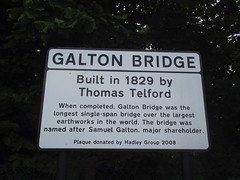
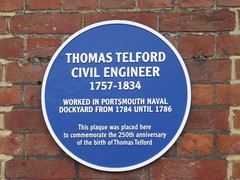

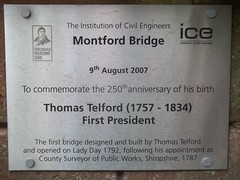

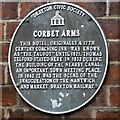

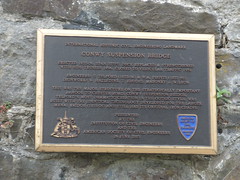
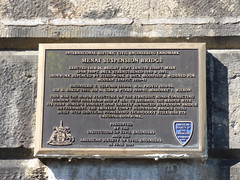



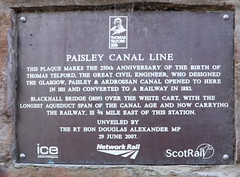

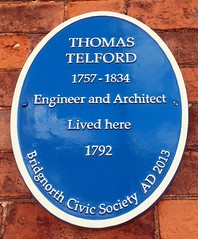
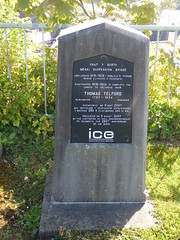
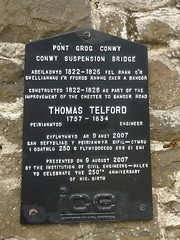
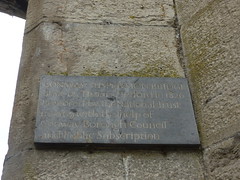


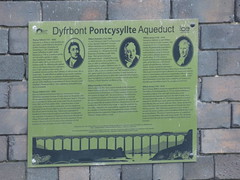

_ENGINEER_Lived_here_(2).jpg?width=250)